
What Is a Semi Electric Hospital Bed? Guide for 2025

Semi electric hospital beds are changing recovery at home and in care facilities. Here’s something eye opening. Patients who use adjustable beds can reposition themselves up to 15 times more often without help compared to standard beds. That might sound like luxury, but this upgrade is turning out to be an affordable essential for patients and caregivers looking for more comfort, safety, and independence—without the hefty price tag of a fully electric model.
Table of Contents
- Understanding Semi Electric Hospital Beds
- Key Features And How They Work
- Benefits For Patients And Caregivers
- Choosing The Right Bed For Your Needs
Quick Summary
| Takeaway | Explanation |
|---|---|
| Versatile Adjustment Features | Semi electric hospital beds combine electric head and foot adjustments with manual height modifications, offering a cost-effective solution that enhances patient comfort and caregiver efficiency in medical settings. |
| Enhanced Patient Independence | The electric positioning mechanisms allow patients with limited mobility to adjust their bed configuration independently, promoting a sense of control and dignity during recovery. |
| Reduced Strain on Caregivers | The ergonomic design and electric adjustments significantly minimize physical strain on caregivers while repositioning patients, thus improving safety and reducing injury risk. |
| Strategic Purchasing Considerations | Selecting the right semi electric hospital bed involves assessing patient medical needs, caregiver capabilities, and financial factors to ensure both comfort and value over time. |
Understanding Semi Electric Hospital Beds
A semi electric hospital bed represents a versatile medical equipment solution designed to balance patient comfort, caregiver convenience, and cost-effectiveness. These specialized beds provide critical mobility and positioning support for patients requiring extended medical care or recovery assistance.
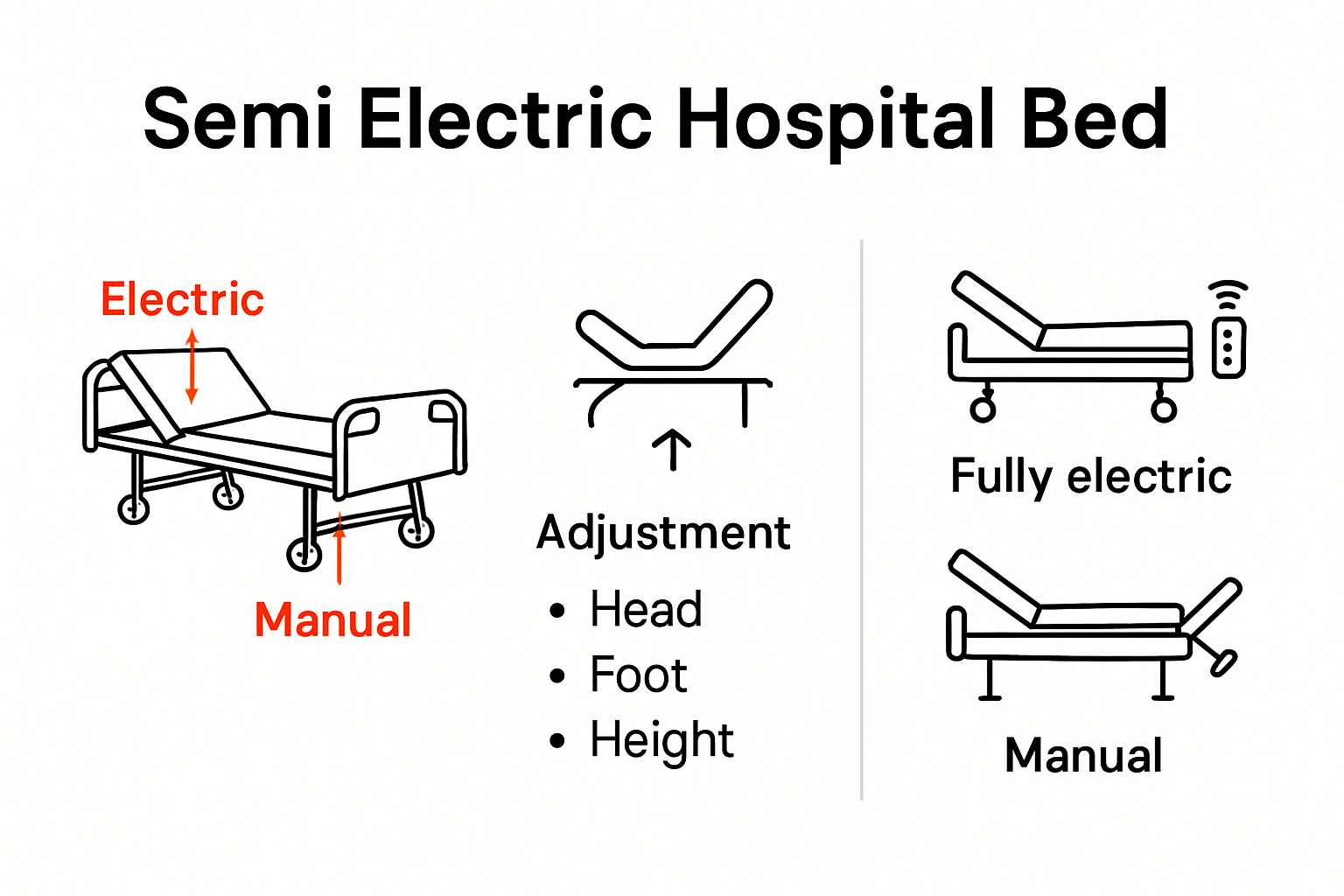
Key Components and Functionality
Semi electric hospital beds combine manual and electric adjustment mechanisms to deliver a practical medical support solution. Wikipedia research reveals these beds typically feature electric motors for head and foot section adjustments, while bed height modifications require manual intervention using a hand crank mechanism.
The electric components allow patients and caregivers to easily modify head and foot positioning with minimal physical effort. This feature is particularly beneficial for patients experiencing limited mobility, recovering from surgeries, or managing chronic health conditions that require frequent positional changes. The electric adjustment capability enables smooth transitions between sitting, reclining, and semi-upright positions without requiring significant physical strain.
Manual height adjustment represents a strategic design choice that contributes to the bed’s overall affordability. While this means caregivers must manually adjust bed height using a hand crank, it significantly reduces the overall cost compared to fully electric hospital bed models. This design approach makes semi electric hospital beds an accessible option for various healthcare settings, including home care, rehabilitation centers, and nursing facilities.

Patient and Caregiver Benefits
Semi electric hospital beds offer multiple advantages that enhance patient comfort and caregiver efficiency. Medical Equipment Research indicates these beds provide crucial support for patients with limited mobility, enabling better positioning for eating, reading, watching television, and receiving medical treatments.
For caregivers, the electric head and foot adjustments reduce physical strain associated with manually repositioning patients. This feature is particularly valuable in home care settings where family members or professional caregivers manage patient mobility. The ability to smoothly adjust bed positioning helps prevent potential injury risks associated with manual patient transfers and repositioning.
Cost considerations also play a significant role in the popularity of semi electric hospital beds. By combining electric and manual adjustment features, these beds offer a balanced solution that meets essential medical support needs without the higher price point of fully electric models. Healthcare Equipment Analysis suggests this makes semi electric beds an attractive option for patients and healthcare providers seeking practical, budget-friendly medical equipment.
Understanding the specific functionality and benefits of semi electric hospital beds empowers patients and caregivers to make informed decisions about medical equipment selection. These beds represent a practical compromise between manual and fully electric models, delivering essential positioning support with enhanced comfort and accessibility.
Below is a summary table outlining the key differences and similarities between semi electric, manual, and fully electric hospital beds referenced in the article, helping readers quickly compare their features and benefits.
| Feature | Manual Bed | Semi Electric Bed | Fully Electric Bed |
|---|---|---|---|
| Head/Foot Adjustment | Manual only | Electric (head/foot), manual (height) | Electric (head, foot, height) |
| Height Adjustment | Manual via hand crank | Manual via hand crank | Electric remote or control panel |
| Patient Independence | Low | Moderate-High (independent head/foot positioning) | High |
| Caregiver Effort | High | Moderate (manual for height only) | Low |
| Cost | Lowest | Moderate (more affordable than fully electric) | Highest |
| Use Case | Short-term, limited care | Home, rehab, facilities, chronic care | Extended care, advanced needs |
Key Features and How They Work
Semi electric hospital beds represent a sophisticated medical equipment solution with intricate design features that prioritize patient comfort, caregiver convenience, and functional adaptability. Understanding the specific mechanisms and technological components of these beds helps patients and healthcare providers make informed decisions about medical equipment selection.
Electric Positioning Mechanisms
The core functionality of semi electric hospital beds revolves around their innovative electric positioning system. Medical Equipment Technology Journal indicates these beds are engineered with specialized electric motors that enable smooth, precise adjustments to the head and foot sections. These motors allow patients or caregivers to modify bed positioning using intuitive control mechanisms, typically integrated control panels or handheld remote devices.
Electric positioning offers significant advantages for patients requiring frequent positional changes. Individuals recovering from surgeries, managing chronic conditions, or experiencing limited mobility can independently adjust their bed configuration without requiring physical assistance. The electric adjustment range typically allows transitions between multiple positions, including flat, semi-reclined, seated, and elevated configurations.
The electric motors driving these adjustments are designed with robust, quiet mechanisms that minimize operational noise and mechanical strain. This ensures smooth transitions and reduces potential disruptions during patient positioning, creating a more comfortable and less stressful experience for patients requiring extended bed rest.
Manual Height Adjustment Principles
While electric motors handle head and foot positioning, semi electric hospital beds incorporate manual height adjustment mechanisms utilizing traditional hand crank systems. Healthcare Engineering Research explains that this manual approach significantly reduces overall equipment complexity and manufacturing costs compared to fully electric models.
The hand crank mechanism allows caregivers to adjust the bed’s overall height incrementally, providing flexibility for patient transfers, medical procedures, and personalized comfort configurations. This manual adjustment method requires physical effort but offers precise control over bed elevation. Caregivers can quickly modify bed height to accommodate different patient needs, medical equipment requirements, and individual comfort preferences.
Safety and Additional Features
Modern semi electric hospital beds incorporate multiple safety features designed to protect patients and enhance operational reliability. Patient Safety Technologies highlights several critical safety components, including robust side rails that prevent accidental falls, emergency manual release mechanisms for power interruptions, and integrated weight distribution systems that ensure stable positioning.
Additional features may include:’
- Durable Construction: Frames constructed from high-strength materials like steel or aluminum
- Integrated Weight Capacity: Supports various patient sizes and medical requirements
- Compatibility with Medical Accessories: Designed to accommodate IV stands, monitoring equipment, and other medical devices
The combination of electric positioning, manual height adjustment, and comprehensive safety features makes semi electric hospital beds a versatile solution for diverse healthcare environments. These beds balance technological innovation, patient comfort, and practical functionality, providing an essential medical support tool for patients and caregivers alike.
The following table summarizes the main features and additional options found in semi electric hospital beds, offering readers a clear overview of what to expect when evaluating different models.
| Key Feature | Description/Benefit |
|---|---|
| Electric Head & Foot Adjustment | Enables easy, precise positioning using motors |
| Manual Height Adjustment | Hand crank allows cost-effective height control |
| Safety Side Rails | Prevent accidental falls and enhance security |
| Emergency Manual Release | Functionality for use during power outages |
| Durable Frame Construction | Steel/aluminum frames support stability and strength |
| High Weight Capacity Options | Accommodates various patient sizes |
| Accessory Compatibility | Works with IV stands and monitoring equipment |
Benefits for Patients and Caregivers
Semi electric hospital beds provide transformative advantages that extend beyond basic medical functionality, creating substantial improvements in patient comfort, caregiver efficiency, and overall healthcare management. These specialized beds represent more than mere medical equipment they are comprehensive support systems designed to enhance quality of life for both patients and those providing care.
Patient Comfort and Independence
International Journal of Environmental Research and Public Health research indicates that adjustable hospital beds significantly improve patient autonomy and psychological well-being. The electric positioning mechanisms allow patients with limited mobility to independently modify their bed configuration, reducing feelings of helplessness and promoting a sense of control over their immediate environment.
Patients recovering from surgeries, managing chronic conditions, or experiencing mobility challenges can easily transition between different positions without requiring constant caregiver assistance. This capability is particularly crucial for maintaining patient dignity and mental health during extended medical recovery periods. The ability to adjust head and foot sections enables patients to find optimal positioning for reading, eating, watching television, or receiving medical treatments with minimal external intervention.
The ergonomic design of semi electric hospital beds also addresses critical physical comfort requirements. Advances in Skin & Wound Care highlights that variable positioning helps prevent pressure ulcers and reduces musculoskeletal strain by allowing frequent, subtle positional changes. This feature is especially beneficial for patients experiencing prolonged bed rest.
Caregiver Efficiency and Safety
For caregivers, semi electric hospital beds represent a significant ergonomic advancement that minimizes physical strain and injury risks. Applied Ergonomics research demonstrates that electric adjustment features substantially reduce the physical demands associated with patient repositioning and transfers.
The electric head and foot section controls enable smoother, more controlled patient positioning compared to manual methods. This reduces the likelihood of caregiver injuries resulting from awkward lifting or repositioning movements. Family members and professional healthcare providers can adjust patient positioning with minimal physical effort, thereby protecting their own musculoskeletal health while providing superior patient care.
Manual height adjustment through hand cranks also provides caregivers with precise control over bed elevation, facilitating easier patient transfers, medical procedures, and personal care tasks. This flexibility is particularly valuable in home care settings where professional equipment might be limited.
Cost-Effective Medical Support
Semi electric hospital beds offer a balanced approach to medical equipment investment, providing advanced features at a more accessible price point compared to fully electric models. Healthcare Cost Management Journal suggests these beds represent an optimal compromise between functionality and affordability.
The combination of electric positioning and manual height adjustment reduces overall manufacturing complexity, translating to lower equipment costs. This makes semi electric hospital beds an attractive option for home care environments, smaller medical facilities, and patients with budget constraints who still require advanced medical support equipment.
By delivering comprehensive benefits for both patients and caregivers, semi electric hospital beds demonstrate how thoughtful medical equipment design can significantly improve healthcare experiences. These beds transcend traditional medical support tools, offering a holistic solution that prioritizes comfort, independence, safety, and economic accessibility.
Choosing the Right Bed for Your Needs
Selecting the appropriate semi electric hospital bed requires careful consideration of multiple factors that extend beyond basic functionality. The right bed can significantly impact patient comfort, caregiver effectiveness, and overall medical care quality.
Recommended Option: Medacure Semi Electric Homecare Bed
For facilities looking for a balance of affordability, durability, and ease of use, the Medacure Semi Electric Homecare Bed is a standout choice. Its lightweight design means staff can set up and reposition the bed with minimal effort, while the smooth hi/lo adjustments (15″ to 23″) help ensure safer patient transfers and adaptable comfort for different care needs. Currently we at medshop direct offer it with a Free Medacure Primex pressure redistribution mattress
This model also offers thoughtful details that matter in real-world facility use: reinforced steel slats for stability, built-in mattress retainers to prevent shifting, and sturdy 4″ locking castors for easy movement between rooms. An emergency hand crank ensures uninterrupted operation during power outages — a must-have for uninterrupted care. Its warm walnut head and foot boards create a more inviting look for patient rooms, helping residents feel more at home. Full or half rails come standard to provide additional patient security, making this bed an excellent fit for nursing homes, assisted living, and long-term care facilities.
✅ Height adjustable from 15″–23″ for safe transfers
✅ Emergency manual operation for power outages
✅ Locking castors and built-in mattress retainers for extra safety
If your facility prioritizes a bed that’s easy for staff to manage, keeps residents comfortable, and stays reliable under daily use, the Medacure Semi Electric Homecare Bed is a smart investment.
Patient Medical Requirements Assessment
Medical Equipment Selection Guidelines emphasize the critical importance of conducting a comprehensive patient needs evaluation before selecting a semi electric hospital bed. This assessment involves analyzing specific medical conditions, mobility limitations, anticipated recovery trajectory, and potential long-term care requirements.
Patients with chronic conditions like respiratory disorders, orthopedic challenges, or neurological complications require beds offering precise positioning capabilities. The electric head and foot section adjustments become crucial for managing specific medical needs. For instance, patients with respiratory issues might benefit from beds enabling elevated head positioning to improve breathing, while those recovering from surgeries need configurations that support gradual mobility restoration.
Weight capacity represents another essential consideration. Healthcare Equipment Standards recommend selecting beds that accommodate the patient’s weight range comfortably, ensuring structural integrity and safety. Different models offer varying weight capacities, so matching the bed’s specifications with the patient’s physical requirements prevents potential equipment failure and ensures optimal support.
Caregiver and Home Environment Compatibility
Beyond patient medical needs, the semi electric hospital bed must integrate seamlessly into the caregiving environment. Home Healthcare Technology Journal suggests evaluating factors like room dimensions, flooring type, available electrical outlets, and potential equipment compatibility.
Caregivers should consider the bed’s maneuverability, ease of manual height adjustment, and compatibility with additional medical accessories. The hand crank mechanism for height adjustment requires physical effort, so assessing the caregiver’s strength and potential assistance needs becomes paramount. Some models offer extended or ergonomically designed cranks to reduce physical strain during bed height modifications.
Additional environmental considerations include:
- Floor Space Requirements: Measuring room dimensions and bed footprint
- Electrical Infrastructure: Ensuring adequate outlet availability
- Accessory Compatibility: Checking integration with IV stands, monitoring equipment
Budget and Long-Term Value Considerations
Medical Equipment Financial Analysis recommends approaching semi electric hospital bed selection as a strategic investment rather than a mere purchase. While these beds offer more affordable options compared to fully electric models, understanding the total cost of ownership becomes crucial.
Key financial considerations include initial purchase price, potential maintenance costs, warranty coverage, and expected lifespan. Some models might have lower upfront costs but require more frequent repairs or replacements. Conversely, slightly more expensive beds could offer extended warranties and superior durability, representing better long-term value.
Patients and caregivers should also explore potential insurance coverage, Medicare reimbursement options, and financial assistance programs that might offset equipment expenses. Consulting healthcare providers, medical equipment suppliers, and insurance representatives can provide comprehensive insights into managing the financial aspects of acquiring a semi electric hospital bed.
Choosing the right semi electric hospital bed transcends simple equipment selection. It represents a holistic decision involving medical needs, caregiving capabilities, environmental constraints, and financial considerations. By methodically evaluating these interconnected factors, patients and caregivers can make informed choices that enhance medical care quality and personal comfort.
Frequently Asked Questions
What is a semi electric hospital bed?
A semi electric hospital bed is a type of medical bed that allows for electric adjustments of the head and foot sections, while the bed height is manually adjusted using a hand crank. This design offers patients greater comfort and caregivers easier repositioning capabilities.
What are the benefits of using a semi electric hospital bed?
Semi electric hospital beds enhance patient independence by allowing them to adjust their positions with minimal assistance. They also reduce physical strain on caregivers, promoting safety and efficiency during patient care.
How do you choose the right semi electric hospital bed?
Choosing the right semi electric hospital bed involves assessing the patient’s medical needs, considering caregiver capabilities, and evaluating space requirements and budget constraints to ensure a good fit for home or medical environments.
Are semi electric hospital beds cost-effective?
Yes, semi electric hospital beds are often more affordable than fully electric models. They provide essential features that improve patient care while being easier on the budget, making them a popular choice for home care and smaller healthcare settings.
Discover Comfort and Independence With the Right Semi Electric Hospital Bed
Choosing the best semi electric hospital bed can feel overwhelming, especially when patient independence, caregiver safety, and budget constraints are on the line. The article highlights how the right adjustable bed can reduce physical strain, save time, and help restore a sense of dignity for those who need it most. But knowing which model meets your requirements for electric positioning, manual height adjustment, and essential safety features can make all the difference in your recovery or care routine.
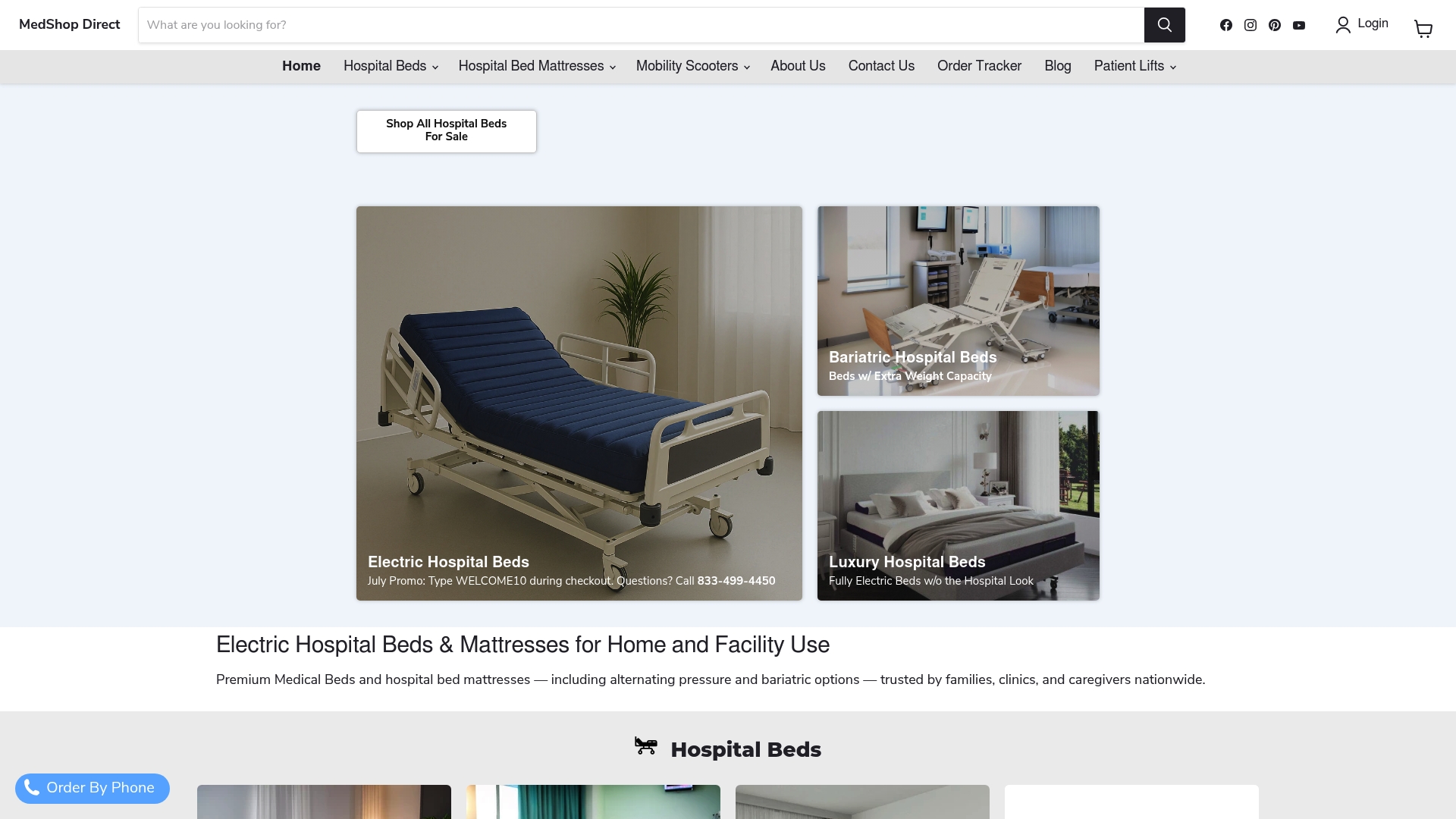
What is the difference between Semi Electric and Fully Electric Homecare and Hospital beds?
When choosing between a semi-electric medical beds and fully electric hospital bed, the main difference comes down to how the height is adjusted. A semi-electric bed has motorized controls for the head and foot sections but uses a manual hand crank to raise or lower the overall bed height. In contrast, a fully electric hospital bed lets caregivers or patients adjust all positions — including the hi/lo height — with the push of a button, offering maximum convenience and minimal physical strain for staff.
Take the next step to simplify your search and protect your loved ones’ comfort. At MedShop Direct, you will find a carefully curated range of hospital beds and essential alternating pressure mattresses designed for home care, hospice, and medical facilities. Our solutions focus on giving patients control and supporting caregivers day after day. Explore options, compare reviews, and discover how MedShop Direct brings quality and peace of mind right to your door. Visit our main site today and make a real difference in your care experience now.
Call MedShop @ 833 499 4450 for a personal experience and assistance to any questions you may have.



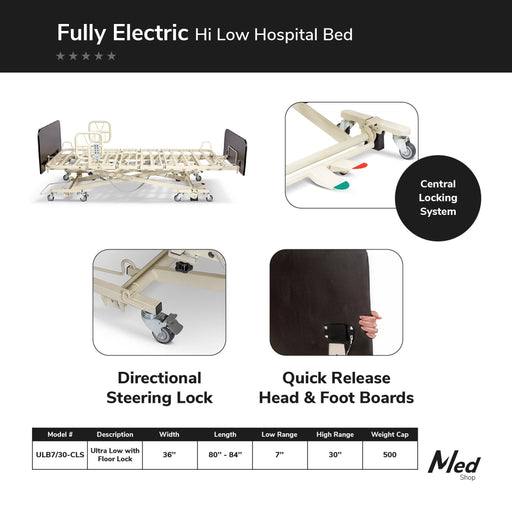
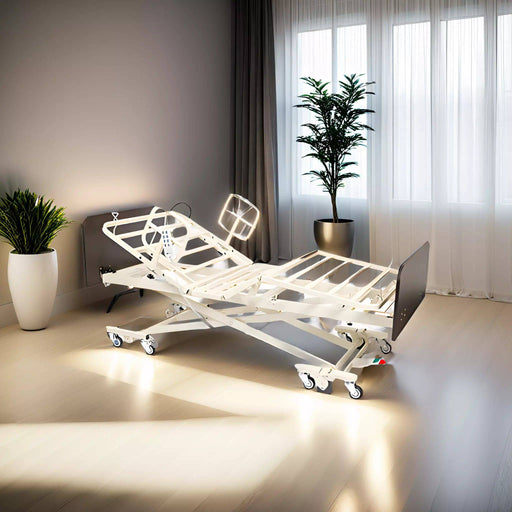
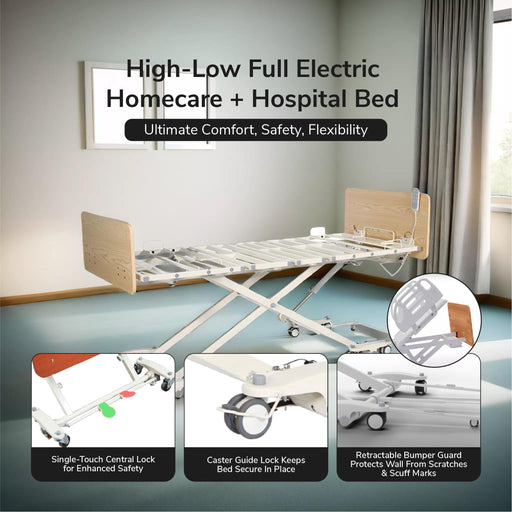
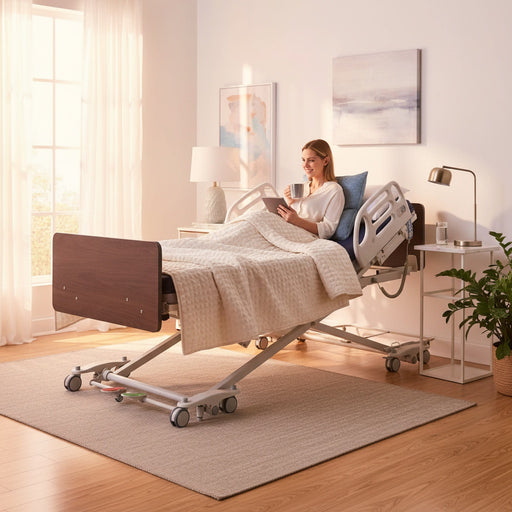


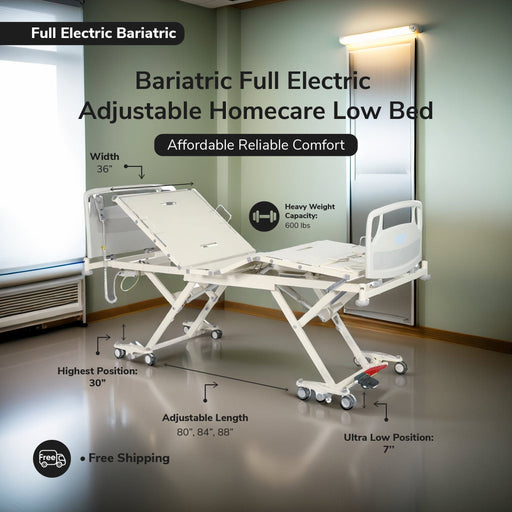
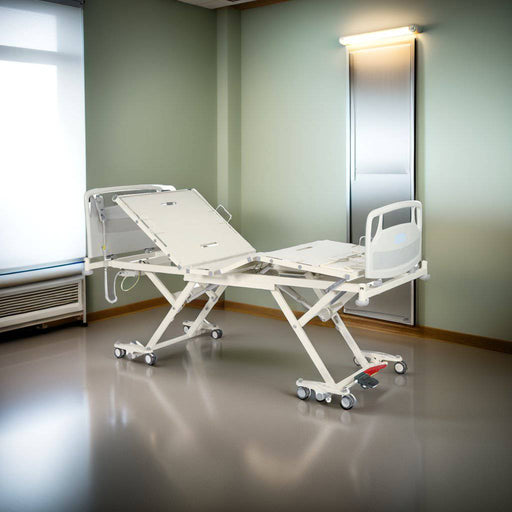
Leave a comment